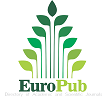Presencia, autoconciencia y autocuidado de los profesionales que trabajan con el sufrimiento
Resumen
El trabajo en el entorno sanitario expone frecuentemente a los profesionales a experiencias de intensidad emocional, que emergen del contacto con la vulnerabilidad, las pérdidas y el sufrimiento de pacientes y familiares, lo que supone una elevada exposición al estrés.
Los avances en neurobiología y la mejor comprensión de la neurofisiología de la relación terapéutica, permiten entender cómo podemos, no solo cuidarnos mejor, sino como dotarnos de recursos para transformar constructivamente la experiencia del que sufre y del que acompaña.
La compresión del rol de la autoconciencia, la presencia y el autocuidado y sus fundamentos neurobiológicos, nos permiten elaborar propuestas para prevenir el riesgo de burn out y otros problemas de salud mental muy prevalentes entre los profesionales.
El artículo revisa las bases de la relación de ayuda, los riesgos y oportunidades de nuestro trabajo, las relaciones entre empatía, autoconciencia y compasión; el balance emocional necesario para trabajar en este entorno y la autoconciencia como plataforma de la presencia y de la regulación emocional.
Se ofrecen algunas prácticas útiles para el autocuidado, incluyendo el trabajo en equipo como factor de protección. Y finalmente se propone un compromiso del profesional con su autocuidado.
Descargas
Citas
Ashar, Y. K., Andrews-Hanna, J. R., Dimidjian, S., y Wager, T. D. (2017). Empathic care and distress: predictive brain markers and dissociable brain systems. Neuron, 94(6), 1263–1273.
Balint, M. (1957). The doctor, his patient and the illness. In London, UK: Tavistock Publications.
Batson, C. D. (2009). These Things Called Empathy: Eight Related but Distinct Phenomena. In The Social Neuroscience of Empathy.
Benito, E. (2020a). EL equipo como herramienta de trabajo y cuidado. SECPAL. https://youtu.be/BCwbeRLnjvU
Benito, E. (2020b). En equipo como grupo de apoyo. https://youtu.be/XSLV-f6DOI0
Calhoun, L. G., y Tedeschi, R. G. (1998). Posttraumatic growth: Future directions. Posttraumatic Growth: Positive Changes in the Aftermath of Crisis, 215–238.
Calhoun, L. G., y Tedeschi, R. G. (1999). Facilitating posttraumatic growth: A clinician’s guide. Routledge.
Caroe, T. (2012). Burnout and empathy in primary care. British Journal of General Practice.
Cebolla i Martí, Ausiàs Josep, García-Campayo, J., y Demarzo, M. (2014). Mindfulness y ciencia. Alianza Editorial.
Cole, R. (1997). Meditation in palliative care - A practical tool for self-management. In Palliative Medicine (Vol. 11, Issue 5, pp. 411–413). Arnold, Hodder Headline Plc.
Eisenberg, N., y Eggum, N. D. (2009). Empathic Responding: Sympathy and Personal Distress. In The Social Neuroscience of Empathy.
Epstein, R. M. (1999). Mindful practice. Jama, 282(9), 833–839.
Figley, C. R. (1995). Compassion fatigue as secondary traumatic stress disorder: An overview. In Compassion fatigue: Coping with secondary traumatic stress disorder in those who treat the traumatised.
Geller, S. M., y Porges, S. W. (2014). Therapeutic presence: Neurophysiological mechanisms mediating feeling safe in therapeutic relationships. Journal of Psychotherapy Integration, 24(3), 178–192.
Harrison, R. L., y Westwood, M. J. (2009). Preventing vicarious traumatization of mental health therapists: Identifying protective practices. Psychotherapy: Theory, Research, Practice, Training, 46(2), 203.
Hölzel, B. K., Carmody, J., Vangel, M., Congleton, C., Yerramsetti, S. M., Gard, T., y Lazar, S. W. (2011). Mindfulness practice leads to increases in regional brain gray matter density. Psychiatry Research - Neuroimaging, 191(1), 36–43.
Kearney, M. K., Weininger, R. B., Vachon, M. L. S., Harrison, R. L., y Mount, B. M. (2009). Self-care of physicians caring for patients at the end of life:“Being connected a key to my survival.” JAMA, 301(11), 1155–1164.
Kearney, M., y Weininger, R. (2011). Whole person self-care: Self-care from the inside out. Springer, New York, NY., 109–125.
McCann, I. L., y Pearlman, L. A. (1990). Vicarious traumatization: A framework for understanding the psychological effects of working with victims. Journal of Traumatic Stress, 3(1), 131–149.
Meier, D. E. (2001). The Inner Life of Physicians and Care of the Seriously Ill. Jama, 286(23), 3007–3014.
Mills, J., y Chapman, M. (2016). Compassion and self-compassion in medicine: Self-care for the caregiver. Australasian Medical Journal, 9(5), 87–91.
Mount, B. M., Boston, P. H., y Cohen, S. R. (2007). Healing connections: on moving from suffering to a sense of well-being. Journal of Pain and Symptom Management, 33(4), 372–388.
Navarro-González, D., Ayechu-Díaz, A., y Huarte-Labiano, I. (2015). Prevalencia del síndrome del burnout y factores asociados a dicho síndrome en los profesionales sanitarios de Atención Primaria. Semergen.
Novack, D. H., Suchman, A. L., Clark, W., Epstein, R. M., Najberg, E., y Kaplan, C. (1997). Calibrating the physician: Personal awareness and effective patient care. In Jama (Vol. 278, Issue 6, pp. 502–509). Amer Medical Assoc.
Pearlman, L. A., y Mac Ian, P. S. (1995). Vicarious Traumatization: An Empirical Study of the Effects of Trauma Work on Trauma Therapists. Professional Psychology: Research and Practice, 26(6), 558–565.
Porges, S. W. (2009). The polyvagal theory: New insights into adaptive reactions of the autonomic nervous system. Cleveland Clinic Journal of Medicine.
Porges, S. W. (1995). Orienting in a defensive world: Mammalian modifications of our evolutionary heritage. A Polyvagal Theory. Psychophysiology.
Porges S. (2018). Guía de Bolsillo de la Teoría Polivagal. El poder transformador de sentirse seguro (Elefhteria).
Sansó, N., Galiana, L., Oliver, A., Pascual, A., Sinclair, S., y Benito, E. (2015). Palliative care professionals’ inner life: Exploring the relationships among awareness, self-care, and compassion satisfaction and fatigue, burnout, and coping with death. Journal of Pain and Symptom Management, 50(2), 200–207.
Saunders, C. (2011). Velad conmigo. Inspiración Para Una Vida En Cuidados Paliativos. IAHPC Press International Association for Hospice and Palliative Care. Houston TX, USA, 43–57.
Shanafelt, T. D., Boone, S., Tan, L., Dyrbye, L. N., Sotile, W., Satele, D., West, C. P., Sloan, J., y Oreskovich, M. R. (2012). Burnout and satisfaction with work-life balance among US physicians relative to the general US population. Archives of Internal Medicine, 172(18), 1377–1385.
Singer, T., y Klimecki, O. M. (2014). Empathy and compassion. Current Biology, 24(18), R875–R878.
Sir William Osler. (2004). Aequanimitas con otras conferencias a estudiantes de medicina, enfermeras y médicos (Fundación).
Soler, J. K., Yaman, H., Esteva, M., Dobbs, F., Asenova, R. S., Katić, M., Ožvačić, Z., Desgranges, J. P., Moreau, A., y Lionis, C. (2008). Burnout in European family doctors: the EGPRN study. Family Practice, 25(4), 245–265.
}Stamm, B. H. (2012). Helping the Helpers: Compassion Satisfaction and Compassion Fatigue in Self-Care, Management, and Policy of Suicide Prevention Hotlines. Resources for Community Suicide Prevention, 1–4.
Tedeschi, R. G., y Calhoun, L. G. (1995). Trauma and transformation. Sage.
Vago, D. R., y Zeidan, F. (2016). The brain on silent: mind wandering, mindful awareness, and states of mental tranquility. Annals of the New York Academy of Sciences, 1373(1), 96–113.
Valk, S. L., Bernhardt, B. C., Trautwein, F.-M., Böckler, A., Kanske, P., Guizard, N., Collins, D. L., Singer, T., Hombrados-mendieta, I., Singer, T., Klimecki, O. M., Gupta, R., Singh, N., y Kumar, R. (2017). Structural plasticity of the social brain: Differential change after socio-affective and cognitive mental training. Science Advances, 3(10), e1700489.
Whintrobe M, Thorn G, Adams R, Bennett I, H. B. (1973). Principios de Medicina Interna. In Prensa Médica Mexicana: Vol. 4a edición.
Los autores conservan los derechos de autor.
Esta obra está bajo una licencia internacional Creative Commons Attribution 4.0.
Los artículos publicados por la revista científica "Apuntes de Bioética" de la Universidad Católica Santo Toribio de Mogrovejo, Chiclayo, Perú están sujetos a una licencia internacional Creative Commons Attribution CC BY 4.0.
























 BIBLIOTECA USAT
BIBLIOTECA USAT